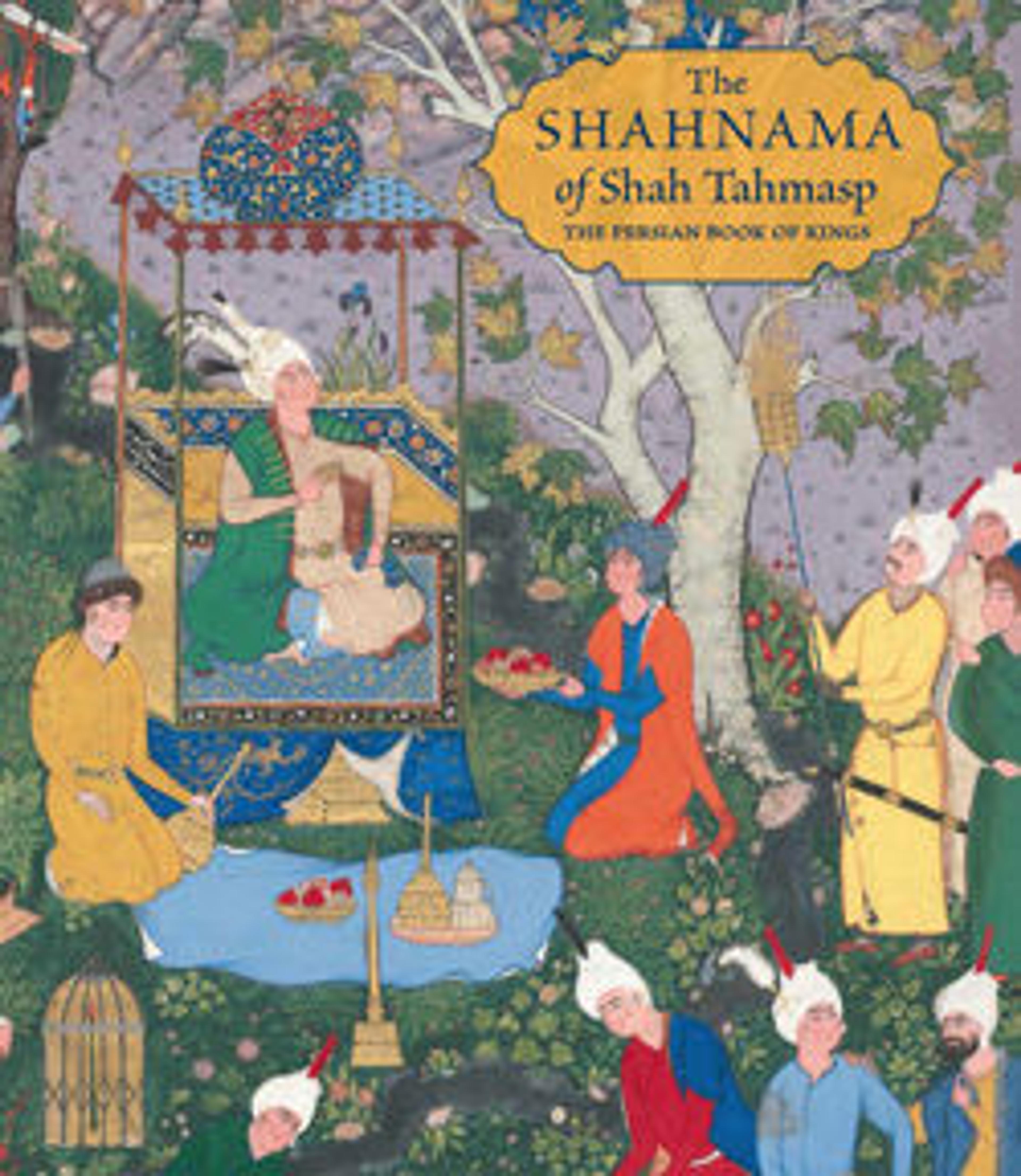"Kai Khusrau is Discovered by Giv", Folio 210v from the Shahnama (Book of Kings) of Shah Tahmasp
After a seven‑year search for the future shah, the persistent Iranian knight Giv finally discovered the prince Kai Khusrau. Faithful to the story, the painting features an idyllic spring landscape, the remoteness of which is indicated by the barren hill in the background. The black pool next to Kai Khusrau and the stream flowing from it would have originally been silver, which has now tarnished.
Artwork Details
- Title: "Kai Khusrau is Discovered by Giv", Folio 210v from the Shahnama (Book of Kings) of Shah Tahmasp
- Author: Abu'l Qasim Firdausi (Iranian, Paj ca. 940/41–1020 Tus)
- Artist: Painting attributed to Qadimi (Iranian, active ca. 1525–1565) , and 'Abd al-Vahhab
- Date: ca. 1525–30
- Geography: Made in Iran, Tabriz
- Medium: Opaque watercolor, ink, silver, and gold on paper
- Dimensions: Painting:
H. 11 1/8 in. (28.3 cm)
W. 7 7/16 in. (18.9 cm)
Page:
H. 18 9/16 in. (47.1 cm)
W. 12 1/8 in. (30.8 cm)
Mat:
H. 22 in. (55.9 cm)
W. 16 in. (40.6 cm) - Classification: Codices
- Credit Line: Gift of Arthur A. Houghton Jr., 1970
- Object Number: 1970.301.32
- Curatorial Department: Islamic Art
More Artwork
Research Resources
The Met provides unparalleled resources for research and welcomes an international community of students and scholars. The Met's Open Access API is where creators and researchers can connect to the The Met collection. Open Access data and public domain images are available for unrestricted commercial and noncommercial use without permission or fee.
To request images under copyright and other restrictions, please use this Image Request form.
Feedback
We continue to research and examine historical and cultural context for objects in The Met collection. If you have comments or questions about this object record, please contact us using the form below. The Museum looks forward to receiving your comments.
